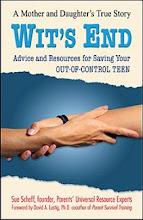
Peer Pressure leads to “Good Teens Making Bad Choices” which is very common today.
Teen Peer Pressure can be extremely damaging to a pre-teen or teen that is desperately trying to fit in somewhere – anywhere in their school. They are not sure what group they belong in, and those that are suffering with low self esteem can end up fitting more comfortably with the less than desirable peers. This can be the beginning of a downward spiral. When a child doesn’t have confidence of who they are or where they belong, it can lead to the place that is easiest to fit in – usually the not the best crowd.
Keeping your child involved in activities such as sports, music and school clubs can help give them a place where they belong. We always encourage parents to find the one thing that truly interests their child, whether it is a musical instrument, swimming, golf, diving, dance, chess club, drama, etc. It is important to find out what their interests are and help them build on it. Encourage them 100%. They don’t need to be the next Tiger Woods, but they need to enjoy what they are doing and keep busy doing it. Staying busy in a constructive way is always beneficial.
It is very common with many parents that contact us that their child has fallen into the wrong crowd and has become a follower rather than a leader. They are making bad choices, choices they know better however the fear of not fitting in with their friends sways them to make the wrong decisions. Low self esteem can attribute to this behavior, and if it has escalated to a point of dangerous situations such as legal issues, substance use, gang related activity, etc. it may be time to seek outside help. Remember, don’t be ashamed of this, it is very common today and you are not alone. So many parents believe others will think it is a reflection of their parenting skills, however with today’s society; the teen peer pressure is stronger than it ever has been. The Internet explosion combined with many teens Entitlement Issues has made today’s generation a difficult one to understand.
It is so important to find the right fit for your child if you are seeking residential treatment. We always encourage *local adolescent counseling prior to any Residential Treatment Programs or Boarding schools, however this is not always necessary. Many parents have an instinct when their child is heading the wrong direction. It is an intuition only a parent can detect. If something doesn’t seem right, it usually isn’t. If your gut is talking to you, you may want to listen or investigate what your child is doing. Parents need to understand that teen peer pressure can influence adolescents in negative ways. Do you know who your child’s friends are?
Visit http://www.helpyourteens.com/ for more information.






